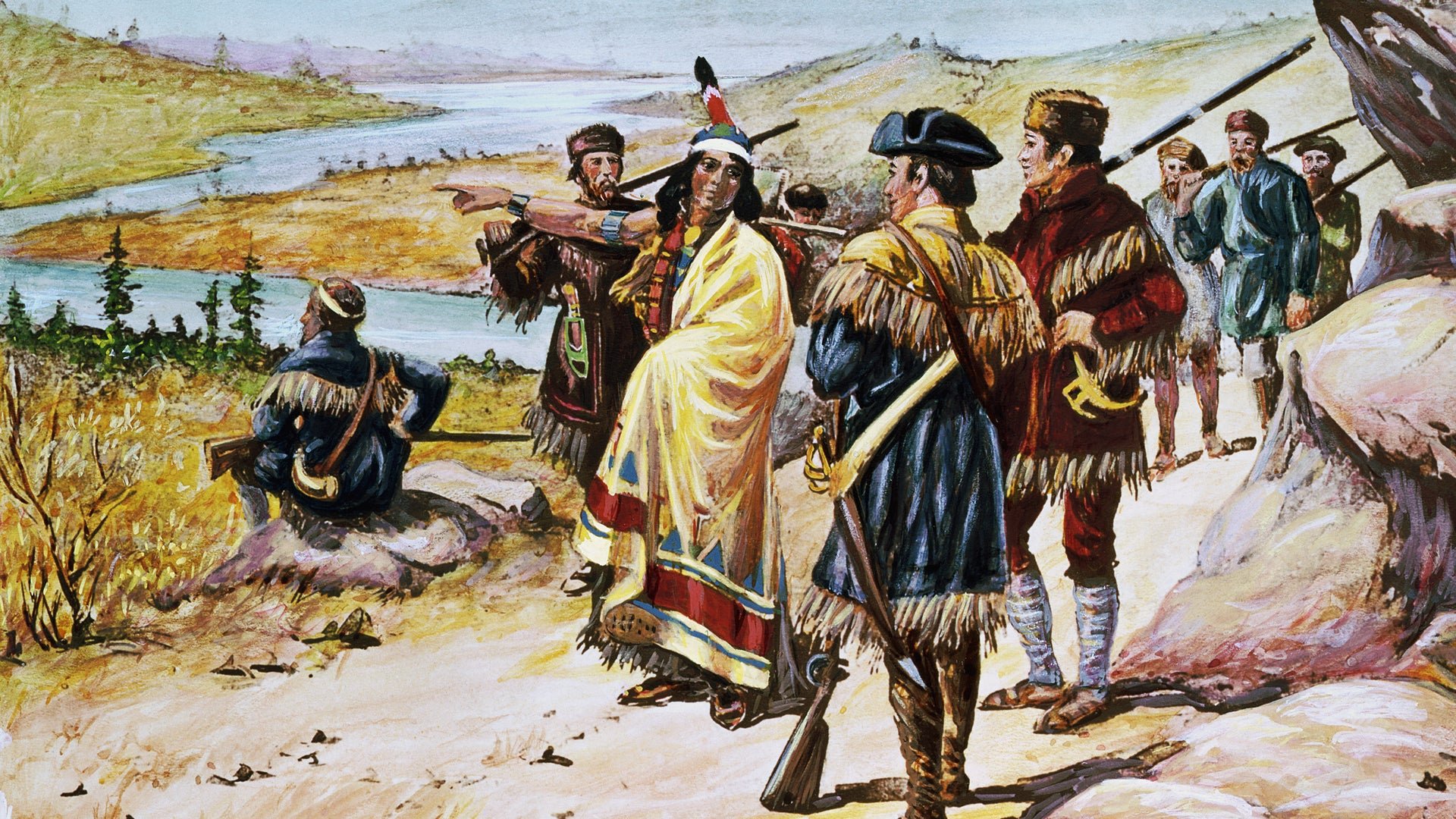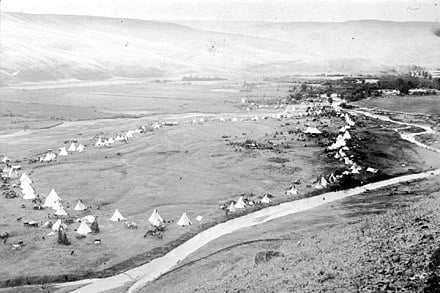May 21, 2023 | Native Hope
Throughout their history, the Blackfoot people have endured hardships and celebrated victories. Their story is one of fierce fighting and dedication to culture and tradition, even in the face of great adversaries.
The Blackfoot tribe was composed of closely related bands: The Peigan (Piikani), the Blood (Kainah or Akainiwa), and the Kiksika (Blackfoot Proper). The Peigan were broken down into Northern and Southern groups.
Traditionally, the Blackfeet lived in what is now Alberta, Canada, and in Montana. They still live there today, though they’re more spread out and have far less land than they did at the height of their population. There are three reservations in Canada and one in Montana. Blackfeet were one of the first Native American Tribes to head West.
Blackfeet language and name
The Blackfoot tribe can be referred to as “Blackfoot” or “Blackfeet,” though the Blackfoot call themselves the Niitsitapi or “The Original People.” There are mixed reports on how the tribe received the name “Blackfoot." Some think it refers to the tribe’s moccasins becoming blackened from their long journeys across the prairie to reach Montana. Others believe that the bottoms of their moccasins were painted black by the Native Americans already.
A well-known classification of Blackfoot tribe members is the Blackfoot Confederacy, which refers to the group of four nations based on kinship and dialect who all spoke the same language of Blackfoot, which comes from the Algonquin language family. The four bands within the confederacy would participate in mutual defense treaties, hold their ceremonies together, and could intermarry.
Blackfoot migration history and interactions with settlers
The Blackfoot Nomadic Habits
The Blackfeet were fierce warriors known to raid other Native American tribes and follow the buffalo through their migration in the seasons. Initially, the tribe migrated on foot and used wooden travois pulled by dogs to carry their belongings. They first lived in the Saskatchewan Valley, but at the height of their power, they held a vast territory from Northern Saskatchewan to the Southern headwaters of the Missouri River.
Blackfeet were known as one of the most aggressive military powers on the plains, and they warred against neighboring tribes and took their horses. They also kept British, French, and American fur traders from poaching beavers in the upper parts of Missouri. It’s estimated that the Blackfoot population reached 15,000 at the height of their control of the territory. They drove other tribes like the Kootenai, Flathead, and Shoshone tribes west of the continental divide through their travels and tactics.
Once the Blackfeet acquired horses and firearms from white traders and Cree and Assiniboine go-betweens, they were able to gain more territory and hunt with greater ease.
Blackfoot Interactions With Settlers and the United States Government
Initially, Blackfeet stayed out of many of the wars between Native Americans and white settlers. Yet they still got caught in the middle of battles, even when they were trying to stay neutral. There was a massacre of innocent Blackfoot Natives when they were mistaken for another tribe during an altercation.
Like many Native Americans, the Blackfeet suffered from forced relocation and assimilation efforts instigated by white settlers. Many of them tried to resist assimilation, and for three decades after their first treaty with the United States, they refused to give up hunting in favor of farming. However, the buffalo were almost extinct by the early 1880s, and nearly one-quarter of the Piegan Blackfeet died of starvation.
The Blackfeet were forced to sign the “Sweet Grass Treaty” in 1888, which was supposed to secure land for them after their territory had been slowly taken by settlers. However, in 1896, the United States forced the tribe to cede the mountain lands promised to them in the treaty, adding another horrific injustice to the pattern of the United States mistreating Native Americans.
The loss of land and the end of their nomadic traditions greatly altered the social structures of the Blackfeet bands, and the nations that were once considered ethnic associations were institutionalized as governments and referred to as “tribes” in the United States. Many Blackfoot Natives died from European diseases like smallpox. Others died as a result of having to reframe their lives from that of nomadic travel to settled life.
Blackfeet culture
Blackfeet Houses and Community
Blackfeet lived in tipis made from buffalo hides and would eat buffalo, fish, smaller game, fruits, and vegetables. Women in the tribe would process the killed buffalo and make dried meat mixed with fruit to get the community through winter when meat was scarce. In the winter, Blackfeet would separate into bands of approximately 10-20 ledges, which amounted to about 80-240 people. They would live near wooded areas in order to hunt effectively.
Each band was led by a chief and was defined by residence rather than kinship, so members were free to join other bands if they wanted to, which helped to reduce fighting within the bands. The groups were traditionally large enough to take up communal hunts but small enough to retain flexibility in travel.
Societies were a large part of Blackfoot culture, with separate groups for warriors, religious members of the tribe, and women’s societies. Each society served a different function within tribal life.
Blackfoot Traditions
Though the Blackfoot wintered separately within smaller bands, the whole tribe would gather together in the summer to observe the Sun Dance, which was the principal tribal religious ceremony. The summer was also when the warrior societies would accept new members. Men could prove their worth to these societies by partaking in brave acts and deeds.
Where are the Blackfeet Today
Today, the Blackfeet are working to preserve their traditions, including their language and land rights. The population is growing, and many Blackfeet still live on reservations. They have been integral in the fight to keep Montana’s Rocky Mountain Front free of development since it is a crucial part of their sacred heritage.
Even when their traditions were banned, Blackfeet kept their practices, such as the Sun Dance, alive. They are still vibrant people with an impressive and important past.
Want to learn more about native american history?
|
Grab our guide, Reflecting on Our Foundations, to learn about:
|
 |




COMMENTS